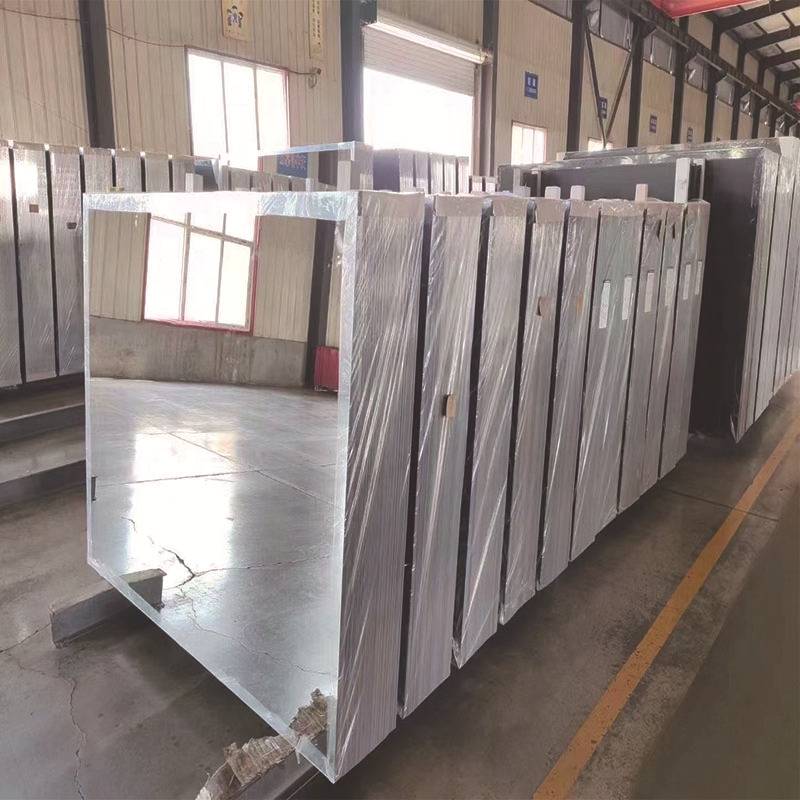Understanding Plain Float Glass Properties, Production, and Applications
Plain float glass is a widely used material in various industries, known for its clarity, brightness, and thermal stability. This article explores the properties, production techniques, and diverse applications of plain float glass, emphasizing its significance in modern construction and design.
Properties of Plain Float Glass
Plain float glass is characterized by a few key properties that make it an excellent choice for numerous applications. Firstly, it is made from high-purity silica sand, soda ash, and limestone, which are melted together at high temperatures. The resulting product is a flat sheet of glass with a uniform thickness and smooth surface, allowing for high light transmission and minimal distortion.
Another significant property of plain float glass is its optical clarity. The glass is produced through a process that creates an optical quality surface, making it ideal for applications where visibility is essential, such as windows and display cases. Additionally, plain float glass is resistant to many chemical agents, which enhances its durability and longevity.
Thermal performance is another crucial aspect to consider. While plain float glass is not a thermal insulator, it can withstand significant temperature changes without breaking, making it suitable for environments where such conditions are common. Its ability to reflect and transmit light also provides advantages in energy-efficient building design.
Production of Plain Float Glass
The production of plain float glass involves several steps, starting with the preparation of raw materials
. The primary ingredients—silica sand, soda ash, and limestone—are combined and heated in a furnace at temperatures exceeding 1,600 degrees Celsius (2,912 degrees Fahrenheit). The molten glass is then floated on a layer of molten tin, which creates a perfectly flat surface.
This floating process is critical because it minimizes surface defects and ensures a uniform thickness. After forming, the glass is gradually cooled in a controlled manner, known as annealing, to relieve internal stresses. The resulting sheets are then cut to size, polished, and packaged for distribution.
plain float glass
This innovative production method was first developed in the mid-20th century and has since evolved with technological advancements. Modern float glass production facilities utilize automated systems for better efficiency and quality control, making it one of the most reliable and popular glass types available.
Applications of Plain Float Glass
The versatility of plain float glass makes it suitable for a wide range of applications. In the construction industry, it is predominantly used for windows in residential and commercial buildings due to its excellent light transmission and aesthetic appeal. Architects often choose plain float glass for façades to create a seamless connection between indoor and outdoor spaces.
Moreover, plain float glass serves various functional roles in buildings, including doors, partitions, and skylights. Its ability to be easily fabricated allows for customization, enabling designers to create unique architectural features while adhering to safety standards.
In the automotive industry, plain float glass is commonly used for windshields and windows. Its clarity and strength enhance driver visibility and safety. Additionally, it is used in manufacturing appliances and interior design elements such as tabletops and mirrors, where aesthetics are paramount.
Furthermore, float glass has applications in the energy sector, specifically in solar panel technology. By effectively transmitting sunlight, plain float glass helps maximize energy capture in photovoltaic solar panels, contributing to sustainable energy solutions.
Conclusion
In summary, plain float glass is an essential material at the intersection of functionality and aesthetics. Its unique properties, efficient production process, and versatile applications have made it a staple in construction, automotive, and energy sectors. As technology continues to advance, the potential for new uses and enhancements of plain float glass remains vast, ensuring its relevance in future developments. Whether used in modern skyscrapers or innovative solar technologies, plain float glass will undoubtedly continue to play a vital role in shaping our environments.
 Afrikaans
Afrikaans  Albanian
Albanian  Amharic
Amharic  Arabic
Arabic  Armenian
Armenian  Azerbaijani
Azerbaijani  Basque
Basque  Belarusian
Belarusian  Bengali
Bengali  Bosnian
Bosnian  Bulgarian
Bulgarian  Catalan
Catalan  Cebuano
Cebuano  Corsican
Corsican  Croatian
Croatian  Czech
Czech  Danish
Danish  Dutch
Dutch  English
English  Esperanto
Esperanto  Estonian
Estonian  Finnish
Finnish  French
French  Frisian
Frisian  Galician
Galician  Georgian
Georgian  German
German  Greek
Greek  Gujarati
Gujarati  Haitian Creole
Haitian Creole  hausa
hausa  hawaiian
hawaiian  Hebrew
Hebrew  Hindi
Hindi  Miao
Miao  Hungarian
Hungarian  Icelandic
Icelandic  igbo
igbo  Indonesian
Indonesian  irish
irish  Italian
Italian  Japanese
Japanese  Javanese
Javanese  Kannada
Kannada  kazakh
kazakh  Khmer
Khmer  Rwandese
Rwandese  Korean
Korean  Kurdish
Kurdish  Kyrgyz
Kyrgyz  Lao
Lao  Latin
Latin  Latvian
Latvian  Lithuanian
Lithuanian  Luxembourgish
Luxembourgish  Macedonian
Macedonian  Malgashi
Malgashi  Malay
Malay  Malayalam
Malayalam  Maltese
Maltese  Maori
Maori  Marathi
Marathi  Mongolian
Mongolian  Myanmar
Myanmar  Nepali
Nepali  Norwegian
Norwegian  Norwegian
Norwegian  Occitan
Occitan  Pashto
Pashto  Persian
Persian  Polish
Polish  Portuguese
Portuguese  Punjabi
Punjabi  Romanian
Romanian  Russian
Russian  Samoan
Samoan  Scottish Gaelic
Scottish Gaelic  Serbian
Serbian  Sesotho
Sesotho  Shona
Shona  Sindhi
Sindhi  Sinhala
Sinhala  Slovak
Slovak  Slovenian
Slovenian  Somali
Somali  Spanish
Spanish  Sundanese
Sundanese  Swahili
Swahili  Swedish
Swedish  Tagalog
Tagalog  Tajik
Tajik  Tamil
Tamil  Tatar
Tatar  Telugu
Telugu  Thai
Thai  Turkish
Turkish  Turkmen
Turkmen  Ukrainian
Ukrainian  Urdu
Urdu  Uighur
Uighur  Uzbek
Uzbek  Vietnamese
Vietnamese  Welsh
Welsh  Bantu
Bantu  Yiddish
Yiddish  Yoruba
Yoruba  Zulu
Zulu 

